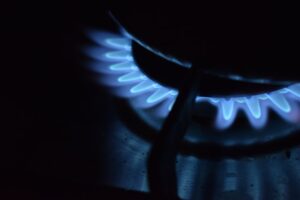How to Identify and Stop Gas Leakage At Home
 Gas is a convenient resource for powering stoves and heaters, but it also has a few risks. Internal damage, unclean pipes, or sheer carelessness can result in gas leakage that can put you and your family at risk.
Gas is a convenient resource for powering stoves and heaters, but it also has a few risks. Internal damage, unclean pipes, or sheer carelessness can result in gas leakage that can put you and your family at risk.
Thankfully, there are several ways for you to identify and stop a gas leakage before it can cause extensive damage. To help you ensure your and your family’s safety, we have included the signs of gas leakage and possible solutions in this blog.
Why is Gas Leakage Dangerous?
Gas leakage can be dangerous for several reasons depending on which gas is leaking at your home.
Natural Gas
Natural gas is commonly used for stoves, but it can be dangerous if it starts leaking. It is highly flammable, and even the slightest sparks in a room with natural gas leakage can engulf the place in flames.
Carbon Monoxide
Carbon monoxide is produced when you turn on fireplaces, furnaces, lanterns, etc., and can quickly become dangerous if you are not careful about ventilation. Carbon monoxide poisoning can cause headaches, vomiting, nausea, etc., in humans and animals, and higher concentrations can even result in death.
What makes the gas even more threatening is that a person will become paralyzed after inhaling a specific quantity, preventing them from escaping to safety.
How to Identify Gas Leakage
Given how dangerous either of those gases can be in leakage, detecting leakage signs early on is critical.
1. Persistent Whistling or Hissing
In case of natural gas leakage, you will likely hear a persistent whistling or hissing sound around the pipes it is leaking from. If you start hearing such sounds unexpectedly, you may have gas leakage.
2. Damage to House Plants
House plants are susceptible to air quality because they absorb the air in their surroundings to purify it. However, natural gas and carbon monoxide damage plants and make them die out. If your otherwise healthy plants suddenly start rotting, it is best to check for gas leakage.
3. Color of the Flame
You will likely notice the stove flame switch from its blue color to orange or red in natural gas leakage. The reason for the change is that leakage reduces the gas pressure, thus weakening the flame.
Blue flames are hotter than orange, red, or green flames, and their absence is a clear indication of gas-related problems.
4. Sulfur-like Smell in the Air
Natural gas is always combined with a few pungent gasses that move faster, given how dangerous it is. These gasses will escape into your house first during a gas leak, their smell acting as a warning.
If you detect a Sulphur smell in any of your rooms, especially the kitchen, you need to go on high alert because it means you have gas leakage.
5. Bubbles in Water
If you suspect gas leakage but are not entirely sure, take soap water and apply some of the water to the area you feel is leaking the gas. If air bubbles appear in the water, you have a gas leak, and you need to immediately take steps to ensure you and your family remain safe.
6. Medical Symptoms
Carbon monoxide leakage can cause a series of medical symptoms that can also help you identify leakage. If you experience the following symptoms, evacuate to a safe location and make sure you take your pets along.
- Dizziness
- Chest pains
- Abdominal pains
- Nausea
- Loss of muscle control
- Fatigue
- Headaches
Additionally, also watch out for any symptoms in your pets. They are sensitive when it comes to air quality and might experience:
- Breathing difficulties
- Lethargy
- Loss of appetite
- Vomiting
- Disorientation
How to Stop Gas Leakage
Now that you know how to identify gas leakage at home, here are a few tips for stopping them.
1. Turn Gas off at the Main Source
Your priority should be turning off the gas from its primary source, especially if you don’t know where it is leaking. In case of carbon monoxide leakage, shut off heaters or lanterns that might be causing it and rush outside into fresh air, leaving the door open to ventilate the space.
2. Check Pressure and Clean Gas Line if Needed
If you know where the leak is, you can try to get the problem sorted yourself. Detach the gas line to prevent accidents before you remove residue gas pressure and clean the pipe. Attach the gas line again and apply an adhesive like Epoxy to ensure it is secure and there are no gaps.
Once you have done everything, test the gas line and pressure, and finish the process.
3. Call Home Restoration Experts
Although we have provided directions for handling the matter, we recommend calling home restoration experts to help you fix the gas leakage. 911 Restoration of Central New Jersey is available 24/7, and you can contact us at (201) 241-3113 soon as you realize there is an issue.
Our teams will reach you within 45 minutes with all the necessary equipment to make your home safe.
Wrapping Up
We hope you found this blog informative and now feel more confident about handling gas leakage at home. If you face gas leakage right now, call us at (201) 241-3113 for immediate assistance. You can also send your queries on this link, and our team will respond as quickly as possible.



